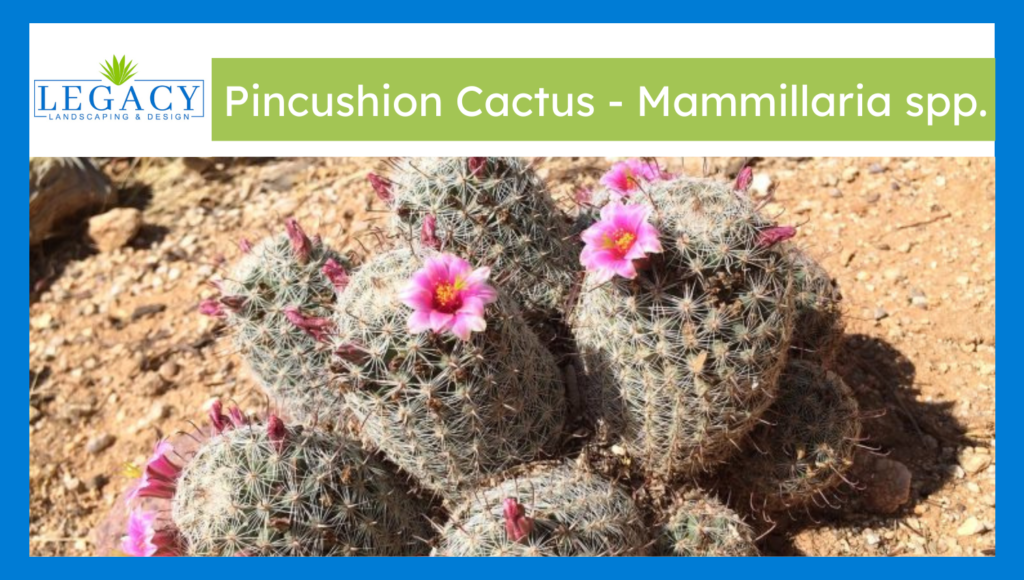The Pincushion Cactus (Mammillaria spp.) grows into a large sphere while keeping its short stature. This plant exists in dry regions extending throughout North and Central America. The plant shows proper functionality in gardens and indoor areas because of its tight structure and prickly stem attributes. Bluish-white through pink to red and yellow flowers create a decorative crown on this cactus plant. The plant continues flourishing when given sun exposure alongside well-drained earth and low water maintenance. Pincushion cactuses are an ornamental standout when properly maintained, adorning any decorative collection with their unique charm.
| Characteristic | Description |
| Size | 2 to 12 inches tall, small and globular. |
| Appearance | Round or cylindrical with dense spines, forming a cushion. |
| Spines | Short, fine spines, often white or yellow. |
| Flowers | Small, funnel-shaped, often pink, white, or purple. |
| Fruits | Small, red or purple berries. |
| Root System | Shallow, fibrous roots for quick water uptake. |
| Lifespan | 20 to 30 years. |
| Habitat | Deserts and dry rocky slopes. |
| Water Storage | Stores water in fleshy stems. |
| Growth Rate | Slow, up to 1 inch per year. |
| Flowering Time | Spring to early summer. |
| Reproduction | Seeds dispersed by animals, birds, and wind. |
Table of Contents
How Do I Care for and Water a Pincushion Cactus?
The pincushion cactus needs bright sunlight together with dry environmental conditions. Your pincushion cactus demands soil that drains swiftly to stop root decay. Water your plant only after the soil completely dries from the surface. Choose drainage solutions that keep water from damaging your pincushion cactus. During winter dormancy keep watering to a minimum. Introduce excluding cactus fertilizer to your plant water once monthly when temperatures remain warm during spring and summer. Much of its healthy growth comes from proper watering techniques plus essential nutrient supplementation. Plant pincushion cactus at temperatures that remain higher than 50°F. Regular checks should happen under low-humidity environments. This plant needs proper light and appropriate amount of water to remain healthy.
How Do I Plant, Propagate, and Transplant a Pincushion Cactus?
Plants require crafts-specific cultivating soil to grow well. For successful drainage select a pot that includes vent holes. The planting process begins by drying offsets in fresh soil for successful propagation. To safeguard the cactus from damage keep your touch delicate when you handle it. Choose a large container because it shields your roots while preventing spine exposure. Avoid restricting root growth. The roots need protection by adding new soil around the plant. Your cactus can develop strong roots when you keep the potting soil at a slight level of moistness. Plants grow and remain healthy when transplanted and planted correctly.
How to Make a Golden Pincushion Cactus?
Golden pincushion cactus features vibrant spines that grow optimally in sunny environments. The cactus requires soil that drains well because poorly drained soil harms its roots. The growth of this plant depends on maintaining dry conditions. You can propagate this cactus through seed planting or by using offsets from fully mature cacti. Spot your pincushion cactus in a warm sunny area for better color development. The cactus shows excellent adaptation to dry climatic conditions. Light water applications help this cactus remain strong while creating a vibrant appearance. The cactus’ compact structure gives both gardens and interior spaces an attractive appeal. Plenty of sunlight and proper water management help this plant develop into a tough, easy-to-keep plant.
What Do Pincushion Cactus Seeds Look Like?
The seeds of the Pincushion cactus adopt dark oval structures that hide in the fruits that develop post-flowering. Due to its rigid outer surface, the seeds become more versatile. After harvesting and drying the fruit herbalists proceed with a careful removal of seeds. Seed germination occurs successfully at 70°F to 80°F (21°C to 27°C) through periodic light doses of water. These small persistent seeds maintain high germination abilities while storing well for future planting needs.
What Zones Support Fishhook Pincushion Cactus Growth?
Fishhook pincushion cactuses grow best in USDA (United States Department of Agriculture) hardiness zones 9 through 11 which feature hot dry climates. These specific geological zones encompass both deserts alongside rocky regions together with the sandy ground which drains well. The cactus shows excellent adaptation to hot dry environments yet it cannot survive chilling temperatures. Native to the southwestern United States including northern Mexico this plant can be found naturally growing in its native habitats.
About The Author
Isaiah Espinoza
Isaiah Espinoza is the proud company owner, founder and driving force behind Legacy Landscaping and Design. Isaiah established Legacy Landscaping & Design in 2014, bringing his vision of creating stunning outdoor spaces to life. Isaiah, the founder of Legacy Landscaping & Design, has a deep-rooted passion for construction and design, stemming from four generations of family expertise in the industry. With a KB-1 General Building License and a CR-21 Hardscaping and Irrigation License, Isaiah has spent the past decade transforming outdoor spaces with exceptional craftsmanship and innovative design.

